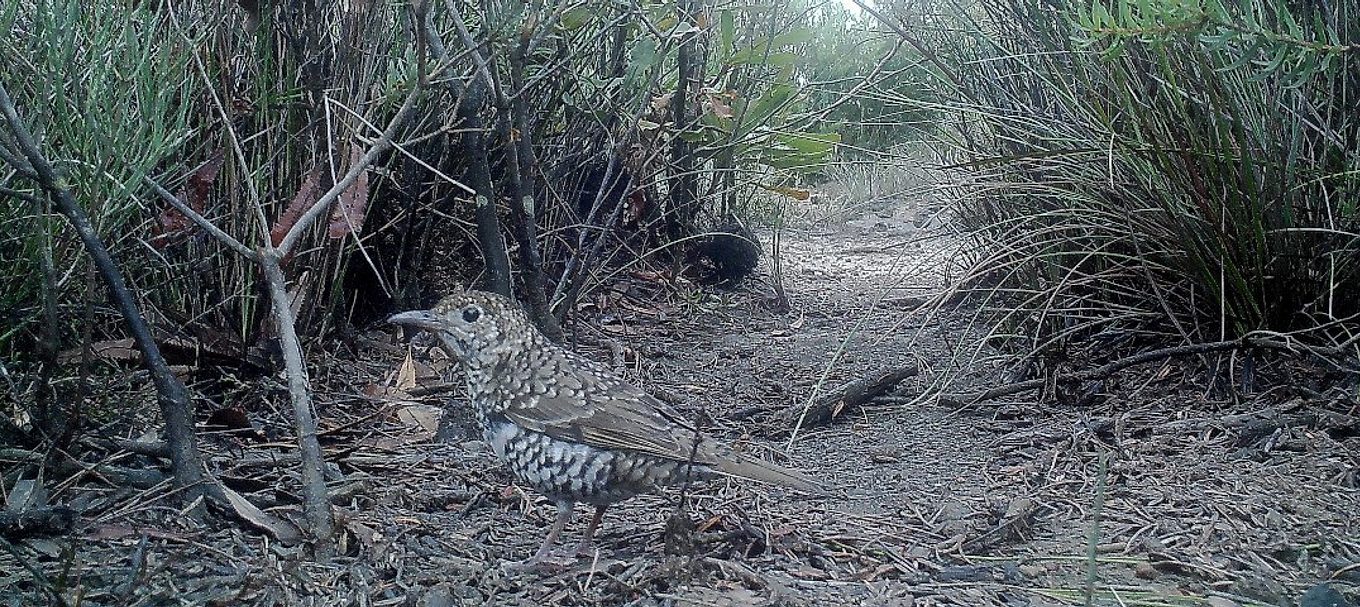
Find out how the bassian thrush is faring post-bushfire
Extensive wildlife monitoring is still underway on Kangaroo Island and in the Adelaide Hills following the 2019-20 summer bushfires, to learn how affected species are recovering.
We’ve filled you in about the plight of the Kangaroo Island western whipbird, the Australian owlet-nightjar, and the southern emu-wren, and now it’s time to learn about another species that isn’t usually in the spotlight – the bassian thrush.
About the bassian thrush
The bassian thrush is a large, secretive bird, coloured with subtle brown and cream feathers.
It has scalloped black crescent-shaped bars down its back, rump and head, offering it perfect camouflage in its habitat of thick leaf litter.
Bassian thrush breed in winter when their favourite food – earthworms – are easier to find.
When foraging, the thrush often stands still before dashing forward and then vigorously jabbing its sturdy bill into the ground to seize a worm.
When males are foraging, they can carry up to five or six very large worms at a time, laying the wiggling pile down each time they extract an extra worm.
This bundle of worms is presented to the female or hungry nestlings to eat.
How was the bassian thrush population affected?
About 60 per cent of the bussian thrush’s habitat on Kangaroo Island and 20 per cent in the Adelaide Hills burnt in the summer bushfires.
The fires put them at greater risk of extinction as they were already in low numbers beforehand.
What does monitoring reveal about the species?
National Parks and Wildlife Service South Australia (NPWSSA) is monitoring the bassian thrush as part of its overall efforts to understand how affected species are faring since the bushfires.
This monitoring helps rangers and ecologists to better understand native and feral animals living in, or passing through, the bushfire-affected areas.
The bassian thrush has been captured on motion-detecting cameras in unburnt patches of vegetation on Kangaroo Island, and ecologists have sighted a few of them during bird survey expeditions on KI and in the Adelaide Hills.
Ecologists have been pleasantly surprised to hear the vulnerable bassian thrush’s iconic song on KI recently, where the birds seem to be much more vocal than in the Adelaide Hills, making them easier to detect.
Bassian thrush often call in the very early hours of the morning, well before the sun is up.
Birdlife Australia surveys, NPWSSA monitoring and feral cat control will help support the recovery of the species.
Do you want to learn more about how SA’s wildlife is recovering post-bushfires? Read about theKangaroo Island dunnartor theglossy black-cockatoo.





